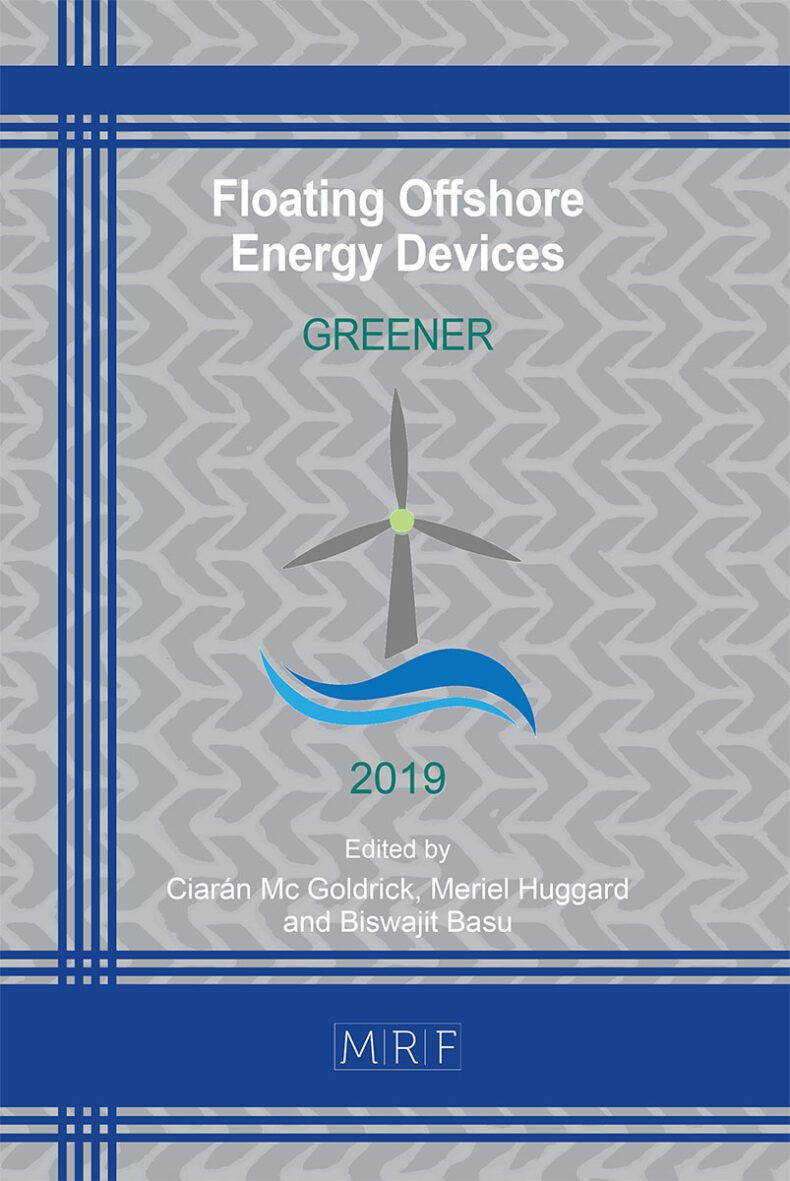On the Importance of High–Fidelity Numerical Modelling of Ocean Wave Energy Converters under Controlled Conditions
Christian Windt, Josh Davidson, Nicolas Faedo, Markel Penalba, John V. Ringwood
download PDFAbstract. Numerical modelling tools are commonly applied during the development and optimisation of ocean wave energy converters (WECs). Models are available for the hydrodynamic wave structure interaction, as well as the WEC sub–systems, such as the power take–off (PTO) model. Based on the implemented equations, different levels of fidelity are available for the numerical models. Specifically under controlled conditions, with enhance WEC motion, it is assumed that non-linearities are more prominent, re- quiring the use of high–fidelity modelling tools. Based on two different test cases for two different WECs, this paper highlights the importance of high–fidelity numerical modelling of WECs under controlled conditions.
Keywords
Wave Energy Converter, Numerical Modelling, BEM, CFD, Control
Published online , 8 pages
Copyright © 2022 by the author(s)
Published under license by Materials Research Forum LLC., Millersville PA, USA
Citation: Christian Windt, Josh Davidson, Nicolas Faedo, Markel Penalba, John V. Ringwood, On the Importance of High–Fidelity Numerical Modelling of Ocean Wave Energy Converters under Controlled Conditions, Materials Research Proceedings, Vol. 20, pp 31-38, 2022
DOI: https://doi.org/10.21741/9781644901731-5
The article was published as article 5 of the book Floating Offshore Energy Devices
![]() Content from this work may be used under the terms of the Creative Commons Attribution 3.0 licence. Any further distribution of this work must maintain attribution to the author(s) and the title of the work, journal citation and DOI.
Content from this work may be used under the terms of the Creative Commons Attribution 3.0 licence. Any further distribution of this work must maintain attribution to the author(s) and the title of the work, journal citation and DOI.
References
[1] A. F. de O. Falcão, “Wave energy utilization: A review of the technologies,” Renewable and Sustainable Energy Reviews, vol. 14, pp. 899–918, 2010. https://doi.org/10.1016/j.rser.2009.11.003
[2] J. V. Ringwood, G. Bacelli, and F. Fusco, “Energy-maximizing control of wave- energy converters: The development of control system technology to optimize their operation,” IEEE Control Systems, vol. 34, pp. 30–55, 2014. https://doi.org/10.1109/MCS.2014.2333253
[3] J. W. Kim, H. Jang, A. Baquet, J. O’Sullivan, S. Lee, B. Kim, and H. Jasak, “Technical and economic readiness review of CFD-based numerical wave basin for offshore floater design,” in Proceedings of the 2016 Offshore Technology Conference, Houston, TX, USA, 2016. https://doi.org/10.4043/27294-MS
[4] M. Penalba, G. Giorgi, and J. V. Ringwood, “Mathematical modelling of wave energy converters: a review of nonlinear approaches,” Renewable and Sustainable Energy Reviews, vol. 78, pp. 1188–1207, 2017. https://doi.org/10.1016/j.rser.2016.11.137
[5] C. Windt, J. Davidson, and J. Ringwood, “High-fidelity numerical modelling of ocean wave energy systems: A review of computational fluid dynamics-based numerical wave tanks,” Renewable and Sustainable Energy Reviews, vol. 93, pp. 610 – 630, 2018. https://doi.org/10.1016/j.rser.2018.05.020
[6] W. E. Cummins, “The impulse response function and ship motions,” DTIC Document, Tech. Rep., 1962.
[7] G. Giorgi and J. V. Ringwood, “Computationally efficient nonlinear Froude–Krylov force calculations for heaving axisymmetric wave energy point absorbers,” Journal of Ocean Engineering and Marine Energy, vol. 3, no. 1, pp. 21–33, February 2017. https://doi.org/10.1007/s40722-016-0066-2
[8] J. R. Morison, M. P. O’Brien, J. W. Johnson, and S. A. Schaaf, “The forces exerted by surface waves on piles,” Petroleum Trans., AIME. Vol. 189, pp. 149-157, 1950. https://doi.org/10.2118/950149-G
[9] C. W. Hirt and B. D. Nichols, “Volume of Fluid (VOF) Method for the Dynamics of Free Boundaries,” Journal of Computational Physics, vol. 39, pp. 201–225, 1981. https://doi.org/10.1016/0021-9991(81)90145-5
[10] E. Berberović, N. P. van Hinsberg, S. Jakirlić, I. V. Roisman, and C. Tropea, “Drop impact onto a liquid layer of finite thickness: Dynamics of the cavity evolution,” Physical Review E, vol. 79, pp. 036 306–1 – 036 306–15, 2009. https://doi.org/10.1103/PhysRevE.79.036306
[11] M. Penalba, J. Davidson, C. Windt, and J. V. Ringwood, “A high-fidelity wave-to- wire simulation platform for wave energy converters: Coupled numerical wave tank and power take-off models,” Applied energy, vol. 226, pp. 655–669, 2018. https://doi.org/10.1016/j.apenergy.2018.06.008
[12] N. Faedo, G. Scarciotti, A. Astolfi, and J. V. Ringwood, “Energy-maximising control of wave energy converters using a moment-domain representation,” Control Engineering Practice, vol. 81, pp. 85–96, 2018. https://doi.org/10.1016/j.conengprac.2018.08.010































